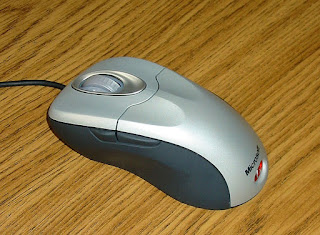Right …
Once again, I am definitely rushed, today.
So I’m going to head right into this week’s Weekly Teaser.
With as minimal fuss as possible … !
~≈É≈~
Saying that … ?
Q1) The first commercial computer mouse was released, today: by Xerox. In which year of the 1980s?
Q2) The mouse was released with which computer: the PC, Mac or Star?
Q3) Xerox originally released the mouse with an earlier computer called what: the PARC, the Alto or the Palo?
Q4) The first commercially successful mouse was released with which computer: the PC, Mac or Lisa?
Q5) Those early mechanical mice used a what, to interact with the surface they were on: a laser, ball or spring?
Q6) Most modern mice use various small lasers, or LEDs to detect movements. They’re called what mice?
Q7) A modern mouse with a cable, connects through what kind of port?
Q8) Many cordless mice connect by which rather blue radio signal?
Q9) Those early 80s mice used two buttons: the same as mice for most modern Windows and Linux based PCs. How many buttons are there, on mice for the modern Apple Mac?
Q10) Finally … One computer mouse. Many computer what: mice or mouses?
Questions.
Q1) 20th April is the UN’s official Chinese Language Day: marking one of the UN’s official languages. How many official languages does the UN use, in total?
Q2) Name one of the other official languages.
Q3) The date was chosen as it marks the day a mythical Chinese figure supposedly invented what: Chinese calligraphy, Chinese characters or printing?
Q4) Written Chinese is written how: from left to right, or right to left?
Q5) Most educated Chinese people are expected to know roughly how many characters: 3000, 4000 or 5000?
Q6) In Standard Chinese, these characters are known as Hanzi. The name comes from a Chinese Imperial dynasty, and the ethnic group named for the dynasty. Name either.
Q7) Standard Chinese, itself, is a version of what: Cantonese, Mandarin or Hokkien?
Q8) Standard Chinese is based on the dialect spoken where: Beijing, Shanghai or Nanjing?
Q9) Standard Chinese, and its parent dialect, are the most widely spoken form of Chinese, with some 850 million speakers. What’s the next most widely spoken version: Wu, Min or Yue?
Q10) Finally … Chinese is a what language: Hmong-Mien, Sino-Tibetan or Austroasiatic?
Answers.
A1) Six.
A2) Arabic, English, French, Russian or Spanish.
A3) Chinese characters.
A4) Left to right. (In columns: in other words, the first character is at the top of a column of written Chinese, with the line going from the top of the page, to the bottom. The columns then go from the left hand side of the page, to the right hand side.)
A5) 4000.
A6) The Han.
A7) Mandarin.
A8) Beijing. (Formerly known as Peking, the city is one of the three most heavily populated on the planet.)
A9) Wu. (According to Wikipedia, the Wu dialect — and its variants — are spoken by some 80 million native speakers: and includes the versions spoken in Shanghai, Hong Kong and much of Zhejiang Province.)
A10) Sino-Tibetan.
Enjoy those …
* The license means you’re free to copy, use, alter and build on each of my quizzes: including the Teasers, Gazette Teasers and the Friday Question Sets. All I ask in return is that you give me an original authors credit on your event’s flyers or posters, or on the night: and, if you republish them, give me an original authors credit AND republish under the same license. A link back to the site — or to the Gazette’s, if that’s where you’ve found these — would be appreciated: as would pressing my donate button, here. Every penny is gratefully received.


No comments:
Post a Comment